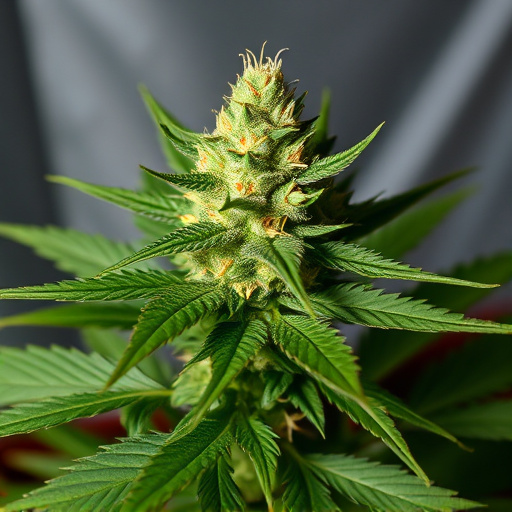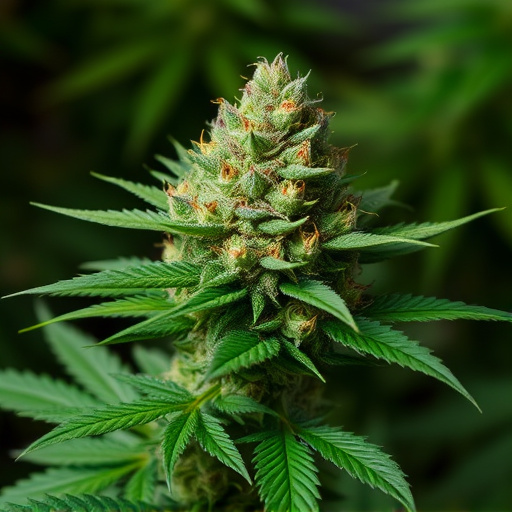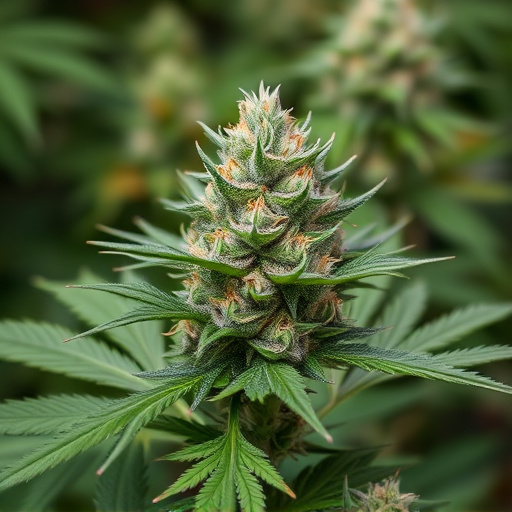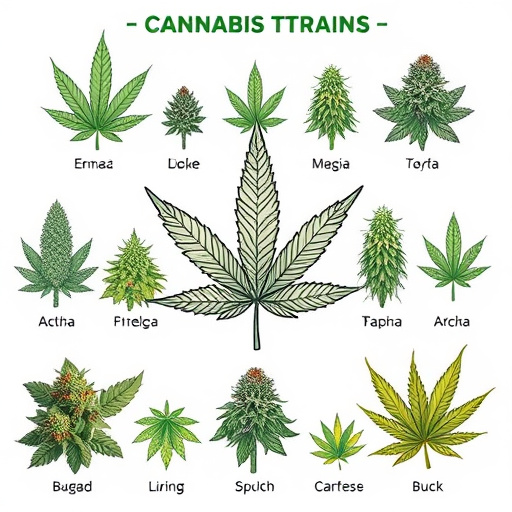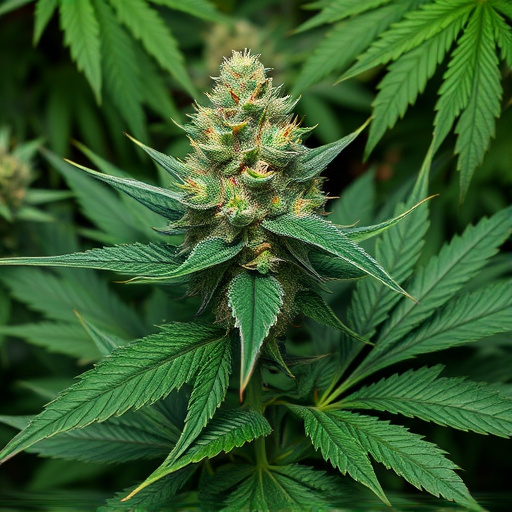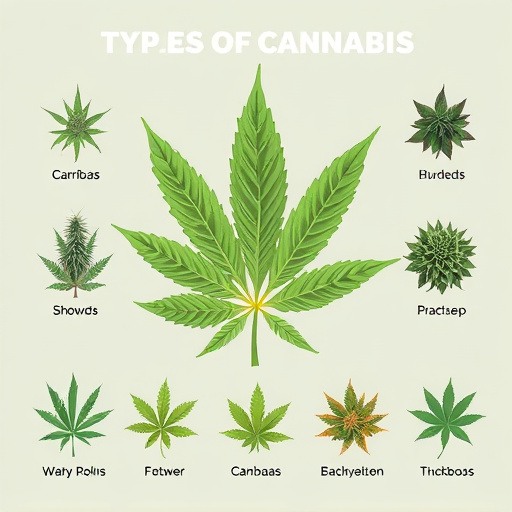Cannabis compounds THC and CBD have therapeutic potential in pain management, with THC offering psychoactive relief and CBD providing natural analgesia without a 'high'. The endocannabinoid system interacts with these compounds, regulating pain perception. Varied cannabis strains, differing in THC to CBD ratios, cater to specific needs; high-THC for potent relief, CBD-rich for subtle effects, Indica for nocturnal relaxation, Sativa for daytime creativity, and hybrid blends for versatility.
In the quest for effective pain management, cannabis has emerged as a promising alternative. This natural compound, comprised of THC (tetrahydrocannabinol) and CBD (cannabidiol), offers unique therapeutic benefits. By interacting with the body’s endocannabinoid system, these compounds alleviate pain and inflammation. This article delves into the science behind their functionality, exploring how different types of cannabis strains can target specific pain conditions, providing a natural approach to relief. Discover the potential of THC and CBD in managing chronic aches and discomfort.
- Understanding THC and CBD: The Key Compounds in Cannabis
- How THC and CBD Interact with the Endocannabinoid System for Pain Relief
- Exploring Different Types of Cannabis Strains for Targeted Pain Management
Understanding THC and CBD: The Key Compounds in Cannabis

Cannabis contains a diverse range of chemical compounds, but two primary ones have gained significant attention for their potential in pain management: THC (Tetrahydrocannabinol) and CBD (Cannabidiol). These compounds are among the most well-studied in the cannabis plant, each offering unique properties that contribute to various therapeutic effects.
THC is perhaps best known for its psychoactive properties, evoking feelings of euphoria and relaxation. It interacts with the endocannabinoid system, specifically binding to CB1 receptors in the brain and central nervous system, which can help modulate pain perception. On the other hand, CBD doesn’t produce a ‘high’ but rather has anti-inflammatory and analgesic (pain-relieving) effects. It works by influencing different receptors and pathways, including certain neurotransmitters that play a role in chronic pain conditions. The various types of cannabis strains offer differing ratios of THC to CBD, catering to specific needs in pain management while ensuring patients experience the benefits without undesirable side effects.
How THC and CBD Interact with the Endocannabinoid System for Pain Relief

The human body has an intricate system known as the endocannabinoid system (ECS), which plays a pivotal role in maintaining homeostasis, including pain regulation. When we consume cannabis, whether through different types of cannabis strains or their derived products like THC (Tetrahydrocannabinol) and CBD (Cannabidiol), these compounds interact with the ECS. THC binds to CB1 receptors in the brain and peripheral nervous system, influencing various physiological processes, including pain perception. This interaction can lead to immediate relief from chronic pain by inhibiting nerve signals that contribute to it.
CBD, on the other hand, has a more subtle effect. It doesn’t bind directly to CB1 or CB2 receptors but instead modulates their activity indirectly. CBD enhances the activity of endocannabinoids like anandamide by preventing their breakdown, thus prolonging their analgesic (pain-relieving) effects. Additionally, CBD interacts with other receptors and channels involved in pain transmission, further contributing to its anti-inflammatory and pain-management properties, making it a popular choice among those seeking natural remedies for various types of pain associated with conditions like arthritis or fibromyalgia.
Exploring Different Types of Cannabis Strains for Targeted Pain Management
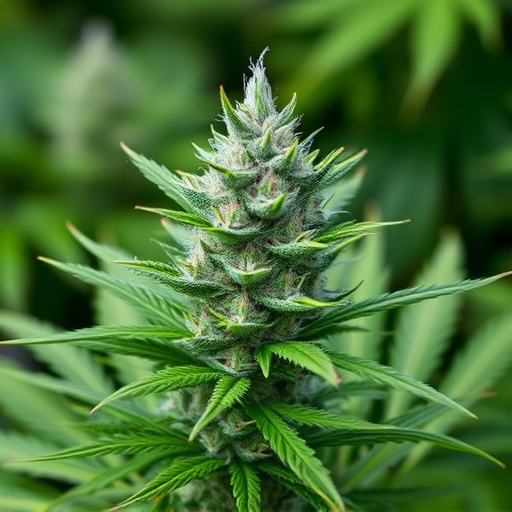
When it comes to pain management, different types of cannabis strains offer a range of options for targeted relief. Each strain has unique chemical profiles, with varying levels of THC (tetrahydrocannabinol) and CBD (cannabidiol), which can influence its effects on the body. For example, high-THC strains are known for their potent pain-relieving properties, but they may also induce more noticeable psychoactive effects. On the other hand, CBD-rich strains provide a more subtle experience while still offering significant analgesic benefits without the mental cloudiness often associated with THC.
Exploring different types of cannabis strains allows individuals to find the right balance for their specific pain needs. Indica strains, known for their calming and sedative properties, are often preferred for nighttime pain management due to their ability to induce relaxation and ease muscle spasms. Sativa strains, conversely, are popular for daytime use as they tend to stimulate creativity and energy while alleviating headaches and body aches. Hybrid strains offer a combination of both indica and sativa effects, making them versatile choices for various types of pain.
Cannabis has emerged as a promising tool in pain management, with THC and CBD playing pivotal roles. By interacting with the endocannabinoid system, these compounds offer relief for various types of pain. Exploring different cannabis strains allows individuals to target specific pain conditions effectively. With ongoing research and advancements, understanding how THC and CBD work continues to unlock personalized treatment options, providing hope for those seeking alternative pain management solutions.
